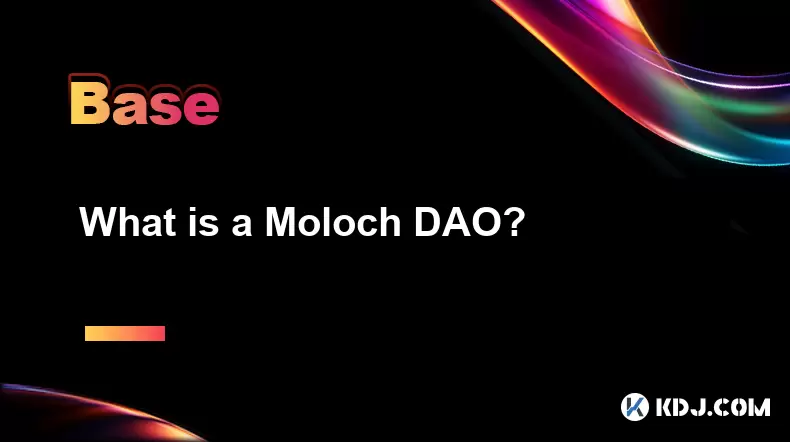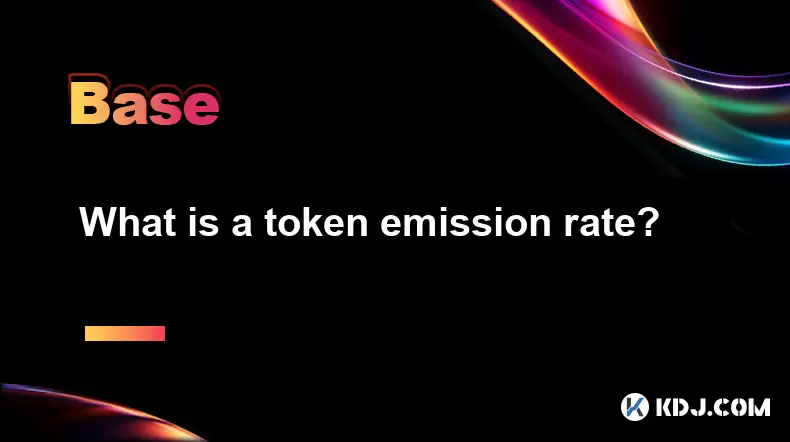-
 Bitcoin
Bitcoin $108,562.4295
0.46% -
 Ethereum
Ethereum $2,533.9553
1.52% -
 Tether USDt
Tether USDt $1.0002
-0.01% -
 XRP
XRP $2.2542
2.23% -
 BNB
BNB $662.4567
1.48% -
 Solana
Solana $151.4114
3.48% -
 USDC
USDC $0.9999
0.00% -
 TRON
TRON $0.2860
0.91% -
 Dogecoin
Dogecoin $0.1685
3.72% -
 Cardano
Cardano $0.5809
1.63% -
 Hyperliquid
Hyperliquid $39.2916
1.85% -
 Sui
Sui $2.8874
0.85% -
 Bitcoin Cash
Bitcoin Cash $496.5801
2.72% -
 Chainlink
Chainlink $13.3582
2.48% -
 UNUS SED LEO
UNUS SED LEO $9.0279
0.07% -
 Avalanche
Avalanche $18.0773
2.30% -
 Stellar
Stellar $0.2426
3.05% -
 Toncoin
Toncoin $2.9086
6.01% -
 Shiba Inu
Shiba Inu $0.0...01170
2.97% -
 Hedera
Hedera $0.1587
3.47% -
 Litecoin
Litecoin $87.4596
1.13% -
 Monero
Monero $317.0425
0.73% -
 Polkadot
Polkadot $3.3778
1.90% -
 Dai
Dai $0.9999
-0.01% -
 Ethena USDe
Ethena USDe $1.0001
-0.01% -
 Bitget Token
Bitget Token $4.4095
0.63% -
 Uniswap
Uniswap $7.3593
6.80% -
 Pepe
Pepe $0.0...09910
3.64% -
 Aave
Aave $274.7388
2.68% -
 Pi
Pi $0.4607
0.48%
What is a Moloch DAO?
A Moloch DAO streamlines decentralized governance by enabling quick funding decisions and membership changes through simple yes/no votes and rage quitting.
Jul 07, 2025 at 06:42 am

Understanding the Concept of a Moloch DAO
A Moloch DAO is a decentralized autonomous organization designed for efficient and minimal governance. It was introduced as a framework to streamline decision-making in blockchain communities by reducing overhead and complexity. The term "Moloch" originates from a mythological entity symbolizing systems that demand sacrifice for collective action, often without regard for individual will. In the context of decentralized governance, this name reflects the intent to avoid cumbersome structures while still enabling community-driven decisions.
The design of a Moloch DAO focuses on simplicity and speed. Unlike traditional DAOs that may feature multi-step voting processes, complex token-weighted proposals, or extensive discussion forums, a Moloch DAO operates under a more streamlined model. Its core mechanism revolves around a single proposal type: whether to fund a specific initiative and admit or reject members.
How Does a Moloch DAO Function?
At its core, a Moloch DAO works through a series of structured yet simple interactions among its members. The protocol allows any member to submit a proposal requesting funding or suggesting a new member. Once submitted, the other members can either support it or oppose it. If there's no significant opposition, the proposal passes quickly.
One key feature of a Moloch DAO is the concept of rage quitting. This allows dissatisfied members to exit the DAO and reclaim their share of the treasury before a proposal is executed. This mechanism ensures that only those who agree with the direction of the DAO remain part of it, promoting alignment within the group.
- Any member can propose a contribution (such as time, code, or resources) in exchange for funds from the DAO’s treasury.
- Other members review the proposal and signal approval or dissent.
- If approved, the proposer receives the allocated funds; if not, the proposal is rejected.
- Members who disagree can choose to leave and retrieve their portion of the funds before execution.
The Role of Voting and Governance
In a Moloch DAO, voting is intentionally limited to prevent gridlock and inefficiency. Instead of prolonged debates or multiple rounds of voting, the system encourages quick consensus. Each vote typically lasts only a short period—often 24 hours—to maintain momentum and ensure timely decisions.
Voting power is usually tied to token ownership, but unlike many DAOs where votes are weighted based on token balance, Moloch DAOs emphasize simplicity. A binary yes/no structure prevails, and proposals pass unless there is an explicit objection strong enough to trigger a split.
- Proposals must be accepted unless someone objects.
- Objections require members to back them with a willingness to split if the proposal passes.
- This ensures that objections come from committed members rather than passive critics.
Structure and Membership Dynamics
Membership in a Moloch DAO is both exclusive and fluid. New members can only join if they are sponsored by existing ones and their application is not opposed. This gatekeeping mechanism maintains quality and trust within the group.
Once admitted, members have equal rights and responsibilities. They can propose funding requests, vote on others’ proposals, and participate in shaping the DAO’s future. However, the option to rage quit ensures that membership remains voluntary and aligned with shared goals.
- New members require sponsorship from current members.
- Entry proposals face a challenge period during which existing members can object.
- Approved applicants gain full participation rights, including proposing and voting.
Use Cases and Real-World Implementations
Several projects and organizations have adopted the Moloch DAO model due to its efficiency and focus on actionable outcomes. These include grants programs, development collectives, and small-scale investment groups where rapid decision-making is crucial.
One notable example is the Moloch Grants Program, which funded Ethereum infrastructure projects. By using the Moloch framework, the program ensured that contributors were rewarded quickly and efficiently, with minimal bureaucracy.
- Funding open-source software developers
- Supporting research initiatives in blockchain technology
- Allocating capital for decentralized applications
Each implementation adheres to the foundational principles of the Moloch DAO: simplicity, speed, and self-selection.
Frequently Asked Questions (FAQ)
Q1: Can anyone create a Moloch DAO?
Yes, anyone can deploy a Moloch DAO using the open-source smart contracts available on platforms like GitHub. No permission is required to launch one, though initial setup involves deploying the contract and defining the initial members and treasury.
Q2: How does a Moloch DAO handle disputes or disagreements?
Disputes are resolved primarily through the rage quit mechanism. If a member strongly disagrees with a proposal outcome, they can exit the DAO and withdraw their share before the proposal executes, thus avoiding forced participation.
Q3: Are Moloch DAOs suitable for large organizations?
While Moloch DAOs excel in small, tightly-knit groups, they may not scale well for large or diverse communities. Their minimalist approach works best when participants share common goals and communication is straightforward.
Q4: What tools are used to manage a Moloch DAO?
Popular tools for managing Moloch DAOs include Aragon, Gnosis Safe, and dedicated Moloch frontends. These interfaces allow members to submit proposals, vote, and monitor treasury movements securely.
Disclaimer:info@kdj.com
The information provided is not trading advice. kdj.com does not assume any responsibility for any investments made based on the information provided in this article. Cryptocurrencies are highly volatile and it is highly recommended that you invest with caution after thorough research!
If you believe that the content used on this website infringes your copyright, please contact us immediately (info@kdj.com) and we will delete it promptly.
- Elon Musk, Andrew Yang, and Polymarket: What's the Buzz?
- 2025-07-07 10:30:12
- Lightchain AI's Bonus Round: The Final Chance Before Mainnet & Ecosystem Tools
- 2025-07-07 10:30:12
- TON Foundation, UAE Golden Visa, and Toncoin Staking: A New Chapter in Crypto Residency?
- 2025-07-07 10:50:12
- Altcoin Prices, Institutional Investors, and the Ethereum Rotation: What's the Deal?
- 2025-07-07 10:50:12
- TON Coin, Golden Visa, and UAE Denial: What's the Real Deal?
- 2025-07-07 10:55:12
- PEPE's Bullish Trend: Riding the 50% Gain Wave?
- 2025-07-07 10:55:12
Related knowledge

What is a user-generated content (UGC) NFT platform?
Jul 04,2025 at 01:49pm
Understanding the Concept of a UGC NFT PlatformA user-generated content (UGC) NFT platform is a digital marketplace or ecosystem where users can create, mint, and trade non-fungible tokens (NFTs) that represent ownership of original digital content they produce. Unlike traditional NFT platforms where creators often include professional artists or develo...

What is composability in DeFi?
Jul 06,2025 at 04:07pm
Understanding the Concept of Composability in DeFiComposability in DeFi refers to the ability of decentralized finance protocols and smart contracts to interact seamlessly with one another, much like building blocks that can be combined in various ways to create new financial products and services. This concept is a core innovation within the DeFi ecosy...

What is a "crypto primitive"?
Jul 05,2025 at 10:14pm
Defining the Concept of a Crypto PrimitiveIn the context of blockchain and cryptocurrency, a crypto primitive refers to a fundamental building block or foundational element used in constructing decentralized systems and cryptographic protocols. These primitives are essential for enabling secure transactions, consensus mechanisms, and smart contract exec...

What is a fair launch?
Jul 05,2025 at 07:31pm
Understanding the Concept of a Fair LaunchA fair launch refers to the release of a cryptocurrency or blockchain project in a manner that ensures equal opportunity for all participants. Unlike traditional token launches, which may involve private sales, venture capital funding, or pre-mining, a fair launch emphasizes transparency and decentralization. In...

What is a token emission rate?
Jul 07,2025 at 02:51am
Understanding the Basics of Token Emission RateIn the realm of cryptocurrencies, token emission rate refers to the speed or frequency at which new tokens are generated and released into circulation within a blockchain network. This concept is fundamental in understanding how certain blockchain ecosystems manage inflation, incentivize participants, and m...

What is a cliff in tokenomics?
Jul 05,2025 at 07:18pm
Understanding the Concept of a Cliff in TokenomicsIn the world of cryptocurrency and blockchain, tokenomics plays a pivotal role in shaping the economic behavior of a digital asset. One of the key mechanisms used to manage token distribution is known as a cliff. This concept is commonly applied in projects that include vesting schedules for tokens, espe...

What is a user-generated content (UGC) NFT platform?
Jul 04,2025 at 01:49pm
Understanding the Concept of a UGC NFT PlatformA user-generated content (UGC) NFT platform is a digital marketplace or ecosystem where users can create, mint, and trade non-fungible tokens (NFTs) that represent ownership of original digital content they produce. Unlike traditional NFT platforms where creators often include professional artists or develo...

What is composability in DeFi?
Jul 06,2025 at 04:07pm
Understanding the Concept of Composability in DeFiComposability in DeFi refers to the ability of decentralized finance protocols and smart contracts to interact seamlessly with one another, much like building blocks that can be combined in various ways to create new financial products and services. This concept is a core innovation within the DeFi ecosy...

What is a "crypto primitive"?
Jul 05,2025 at 10:14pm
Defining the Concept of a Crypto PrimitiveIn the context of blockchain and cryptocurrency, a crypto primitive refers to a fundamental building block or foundational element used in constructing decentralized systems and cryptographic protocols. These primitives are essential for enabling secure transactions, consensus mechanisms, and smart contract exec...

What is a fair launch?
Jul 05,2025 at 07:31pm
Understanding the Concept of a Fair LaunchA fair launch refers to the release of a cryptocurrency or blockchain project in a manner that ensures equal opportunity for all participants. Unlike traditional token launches, which may involve private sales, venture capital funding, or pre-mining, a fair launch emphasizes transparency and decentralization. In...

What is a token emission rate?
Jul 07,2025 at 02:51am
Understanding the Basics of Token Emission RateIn the realm of cryptocurrencies, token emission rate refers to the speed or frequency at which new tokens are generated and released into circulation within a blockchain network. This concept is fundamental in understanding how certain blockchain ecosystems manage inflation, incentivize participants, and m...

What is a cliff in tokenomics?
Jul 05,2025 at 07:18pm
Understanding the Concept of a Cliff in TokenomicsIn the world of cryptocurrency and blockchain, tokenomics plays a pivotal role in shaping the economic behavior of a digital asset. One of the key mechanisms used to manage token distribution is known as a cliff. This concept is commonly applied in projects that include vesting schedules for tokens, espe...
See all articles

























































































